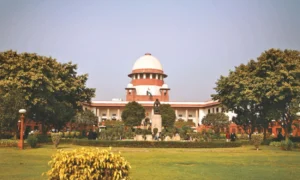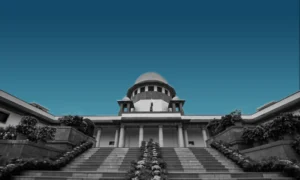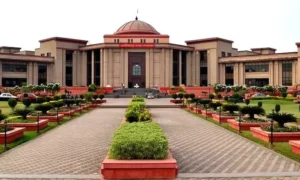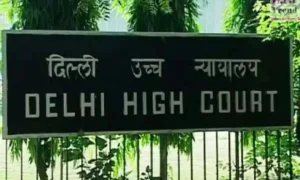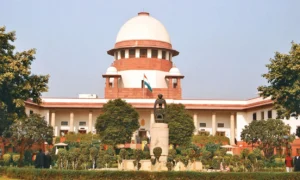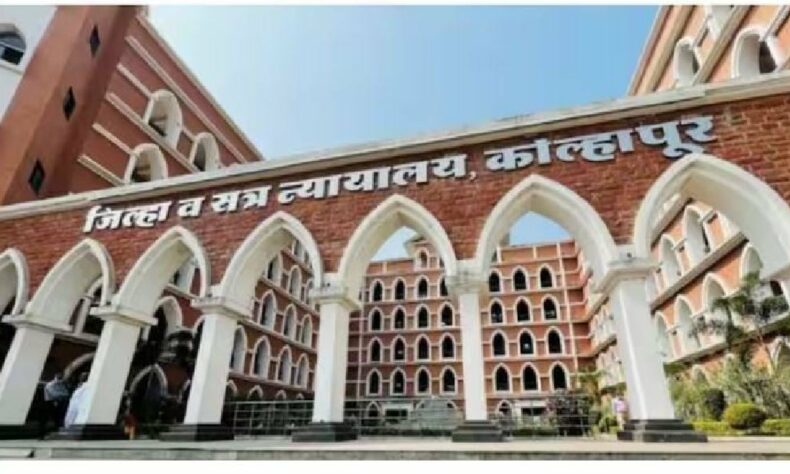
By Sujit Bhar
The recent order of the Bombay High Court’s Kolhapur bench, granting anticipatory bail to a 26-year-old farmer accused of forcibly marrying and raping his 14-year-old niece, has raised profound legal, moral, and social questions.
The facts, as they have unfolded so far, are layered with confusion: the marriage was allegedly solemnised by the girl’s parents; the girl later ran away with a boyfriend; the FIR was filed only a year later and seemingly after her arrest with that boyfriend; and the prosecution and defence painted two very different pictures before Justice Shivkumar Dige.
Yet, amid all these layers of fact and counter-fact, some crucial questions—both legal and humanitarian—seem to have been underexplored by the High Court.
One needs to go into five key areas of confusion:
- The illegality of child marriage.
- The delay in filing the FIR.
- The possibility of abuse in the marital home.
- The treatment of the case under the POCSO framework, and
- The dangerous precedents that bail in such circumstances may set.
THE ILLEGALITY OF MARRIAGE
The very first issue in this case ought to have been the legal impossibility of the marriage itself. Under the Prohibition of Child Marriage Act, 2006 (PCMA), the minimum legal age for marriage is 18 years for women and 21 years for men (Section 2(a) and (b), read with Section 3).
A girl of 14, as in this case, is not of marriageable age under any circumstances. Further, Section 9 of the PCMA makes it a punishable offence for an adult male to marry a minor girl, prescribing rigorous imprisonment up to two years and/or fine. Section 10 criminalises the act of performing or abetting such marriages.
The matter becomes even more severe when viewed under the Protection of Children from Sexual Offences Act, 2012 (POCSO). Section 3 defines penetrative sexual assault against a child below 18 as a criminal offence, punishable under Section 4 with rigorous imprisonment not less than 10 years, extending to life, along with a fine.
The marital status of the victim is immaterial—indeed, the Supreme Court in Independent Thought vs Union of India (2017) clarified that sexual intercourse with a wife below the age of 18 amounts to rape under Section 375 of the Indian Penal Code (now Section 63 of the Bharatiya Nyaya Sanhita, 2023).
Therefore, by merely recognising the existence of a “marriage” with a 14-year-old, the High Court was dealing with a set of automatic criminal offences. The correct legal position is that such a union is voidable at the option of the minor under Section 3 of the PCMA, and in cases where the girl is below 15, it is treated as a void marriage outright. From this perspective, the High Court’s decision to focus narrowly on whether custodial interrogation was necessary for anticipatory bail seems to bypass the glaring illegality of the underlying act.
THE DELAY IN FILING THE FIR
The defence’s strongest point—and one accepted by the High Court—was that the FIR was lodged with a delay of over a year. Ordinarily, delay in reporting can cast doubt on the veracity of a complaint. However, the circumstances here are extraordinary.
The girl, barely 14 at the time of marriage, was not only a minor, but also under the custody of her parents and then her husband’s family. If, as alleged, the marriage itself was forced by her parents, her capacity to approach the police or any authority was severely curtailed. Social realities in rural Maharashtra, as elsewhere in India, suggest that a young girl married off in this way would have little to no autonomy. Her mobility, access to information, and awareness of her rights would be tightly controlled.
In fact, the delay may actually lend credibility to her story: if she had been genuinely forced into the marriage and lived under control, it is only when her circumstances shifted—such as after being arrested with her boyfriend—that she gained an opportunity to speak. The High Court, in accepting the defence narrative of delay without contextualising the minor’s lack of agency, seems to have treated this as a conventional case of late reporting, when in fact it fits a classic pattern of delayed disclosure by vulnerable victims.
THE ELOPEMENT FACTOR
The defence painted the girl’s act of eloping with another man as evidence of her consensual rejection of her husband and, by extension, as a reason to doubt her allegations. However, this interpretation is too simplistic.
A minor girl eloping from her husband’s house may as easily suggest escape from abuse as it may imply attraction elsewhere. In countless cases of forced marriages, young girls run away not because of romantic choice, but because of fear, coercion, or violence at home. The prosecution, instead of being led by the narrative of “romantic elopement,” could have probed whether the girl was attempting to flee an oppressive environment.
This angle seems to have been frugally addressed, if at all, in the High court’s deliberations. Instead, the focus shifted to the alleged ulterior motive of filing an FIR to protect her relationship with her boyfriend. Even if that motive existed, it cannot erase the underlying reality: sexual relations with a 14-year-old—whether in marriage or outside—constitute statutory rape under POCSO.
THE POCSO ANGLE
Another serious issue lies in the handling of the case outside the POCSO framework. POCSO, by design, mandates the establishment of Special Courts under Section 28 to try offences under the Act, ensuring child-friendly procedures and specialised attention. Given that the allegations include sexual assault on a 14-year-old, the case should have been squarely within the jurisdiction of a POCSO Court.
The High Court, while ruling on anticipatory bail, may have treated this as a routine criminal matter. However, given the sensitivity of the case, one might reasonably expect a referral or at least a recognition that the case fell under the special statutory framework.
PRECEDENTIAL DANGERS
The broader worry lies in the precedent this order may have set. In many rural areas of India, child marriage remains a grim reality despite decades of legislation. Granting anticipatory bail to an accused husband in such a case, without explicitly recognising the illegality of the marriage and the strict liability offences under POCSO, risks sending the wrong signal: that such marriages, once performed, may shield adult men from immediate custodial consequences.
This is especially dangerous in patriarchal societies where familial and community pressures are often marshalled to silence young girls. If courts appear lenient or procedural in cases of child marriage, it emboldens families to continue the practice under the belief that the law will not come down heavily unless extraordinary circumstances intervene.
While one expects the judiciary to adhere to the principles of law, one also expects it to reflect the spirit of justice. In this case, the law is clear: child marriage is prohibited; sexual relations with a minor constitute rape. The confusing part here is that, despite all this, the High Court’s order seems preoccupied with procedural considerations such as the delay in filing the FIR or the absence of custodial necessity, while missing the lived reality of a minor girl thrust into a marriage with her maternal uncle.
Society’s trust in courts germinates from the belief that the judiciary always remembers that in cases involving children, context is everything. A 14-year-old cannot be expected to behave like an adult complainant, nor can her actions—such as running away with another man—be judged with the same standards as those of a grown woman. The “human face of the law” requires judges to interpret facts with sensitivity, recognising the powerlessness and vulnerability of the victim.
At the same time, the spirit of the law demands that the judiciary send a clear message: child marriages will not be tolerated. Bail decisions are not only about the freedom of the accused; they shape public confidence in the system and convey societal norms. In this case, the High court could have balanced its grant of bail with a strong statement condemning the illegality of child marriage and reaffirming the strict liability nature of POCSO offences.
Finally, the sheer excess of confusion may have misted judicial eyes. The Kolhapur bench’s decision illustrates how confusion in the presentation of facts can obscure the central issues of law and justice.
📰 Crime Today News is proudly sponsored by DRYFRUIT & CO – A Brand by eFabby Global LLC
Design & Developed by Yes Mom Hosting

